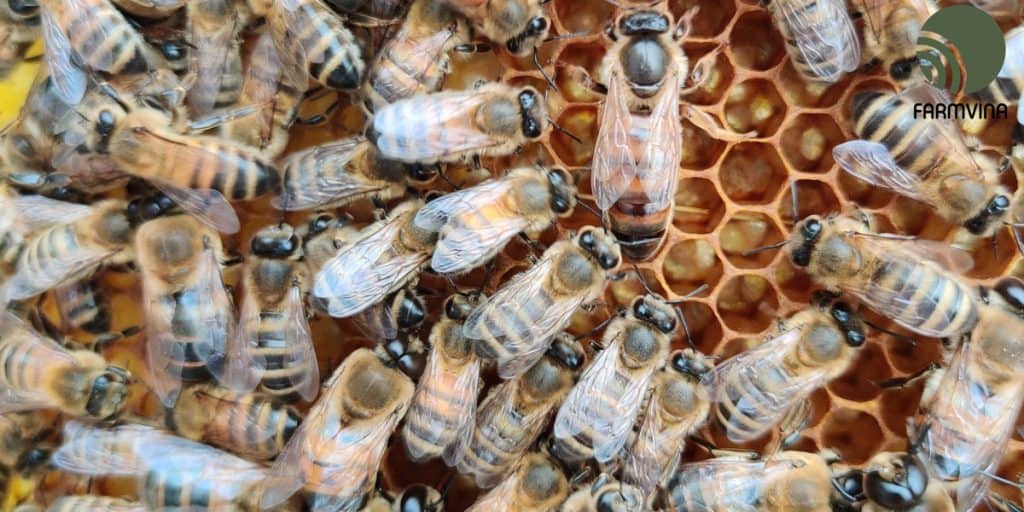How to Roast Coffee Beans? Coffee roasting has a long and rich history that dates back to the 9th century. The process of roasting coffee beans involves applying heat to green coffee beans, causing them to undergo chemical changes and develop the flavors and aromas that we associate with a good cup of coffee. In recent years, home roasting has gained popularity among coffee enthusiasts who want to have more control over the quality and freshness of their coffee.
Home roasting allows coffee lovers to experience the joy of roasting their own beans and enjoying a cup of coffee that is truly fresh. When coffee beans are roasted, they begin to lose their freshness and flavor over time. By roasting at home, you can ensure that you are using the freshest beans possible, resulting in a more flavorful and aromatic cup of coffee.
Benefits of Roasting Coffee Beans at Home
One of the main benefits of roasting coffee beans at home is the ability to have fresher coffee. When you roast your own beans, you can ensure that they are roasted to your desired level of freshness. This means that you can enjoy a cup of coffee that is at its peak flavor and aroma, rather than drinking coffee that has been sitting on store shelves for weeks or even months.
Another benefit of home roasting is cost-effectiveness. Buying green coffee beans in bulk and roasting them yourself can be much cheaper than buying pre-roasted beans from a store. Additionally, you have the option to experiment with different types of beans and roast levels, allowing you to find the perfect combination that suits your taste preferences.
Home roasting also offers the opportunity for customization. Different types of coffee beans have different flavor profiles, and by roasting at home, you can tailor the roast level to bring out the specific flavors and aromas that you enjoy. This level of customization is not possible with pre-roasted beans.
Lastly, home roasting can be a fun and rewarding experience. It allows you to connect with the coffee-making process on a deeper level and gain a greater appreciation for the art of coffee roasting. It can also be a great way to impress friends and family with your newfound coffee expertise.
Choosing the Right Coffee Beans for Roasting
When it comes to choosing the right coffee beans for roasting at home, there are a few factors to consider. First, you need to decide on the type of coffee beans you want to roast. There are two main types of coffee beans: Arabica and Robusta. Arabica beans are known for their delicate flavors and aromas, while Robusta beans have a stronger and more bitter taste.
Next, you should consider the flavor profile of the beans. Different regions and countries produce coffee beans with distinct flavor profiles. For example, beans from Ethiopia are known for their fruity and floral notes, while beans from Brazil have a nutty and chocolatey flavor. It’s important to choose beans that align with your taste preferences.
Lastly, sourcing high-quality beans is crucial for achieving the best results when roasting at home. Look for reputable coffee suppliers that offer high-quality green coffee beans. Consider factors such as the origin of the beans, the processing methods used, and any certifications or awards that the supplier may have.
Equipment Needed for Home Roasting
To get started with home roasting, you will need some equipment. The most common piece of equipment is a coffee roasting machine. There are various types of roasting machines available on the market, ranging from small countertop models to larger drum roasters. These machines allow you to control the temperature and roast time, ensuring consistent results.
If you don’t want to invest in a roasting machine, there are alternative methods for roasting coffee beans at home. One popular method is using a stovetop popcorn popper. These poppers provide even heat distribution and allow you to roast small batches of beans at a time. Another option is using a hot air popcorn popper, which blows hot air onto the beans to roast them.
In addition to a roasting machine or alternative method, you will need a few other tools for home roasting. These include a scale for measuring the beans, a timer to keep track of the roast time, and a colander or cooling tray to cool the beans after roasting. It’s also helpful to have a storage container for the roasted beans.
Understanding the Roasting Process
To achieve the perfect roast, it’s important to understand the chemical changes that occur during the roasting process. When coffee beans are roasted, they undergo a series of complex reactions that result in the development of flavors and aromas.
The roasting process can be divided into different stages: drying, browning, and development. During the drying stage, moisture is removed from the beans, causing them to turn yellow and emit a grassy smell.
In the browning stage, the beans undergo Maillard reactions, which result in the development of caramelization and chocolatey flavors. Finally, during the development stage, the beans continue to darken and release carbon dioxide.
Roasting profiles refer to the specific time and temperature settings used during the roasting process. Different profiles can result in different flavor profiles and roast levels. It’s important to experiment with different profiles to find the one that suits your taste preferences.
Tips for Achieving the Perfect Roast
To achieve the perfect roast at home, there are several tips that can help you along the way. First, it’s important to properly prepare the beans before roasting. This includes removing any debris or defective beans and ensuring that they are evenly sized. This will help ensure an even roast.
During the roasting process, it’s crucial to monitor the roast closely. Pay attention to the color and aroma of the beans, as well as the time and temperature settings. Make adjustments as needed to achieve your desired roast level.
After roasting, it’s important to cool the beans quickly to stop the roasting process. This can be done by transferring the beans to a colander or cooling tray and gently shaking them to remove excess heat. It’s also helpful to blow cool air over the beans or place them in front of a fan.
Once the beans have cooled, it’s time to evaluate the roast. Look for even color and texture, and pay attention to the aroma. It’s helpful to let the beans rest for at least 24 hours before brewing to allow the flavors to fully develop.
Storing Roasted Coffee Beans
Proper storage is essential for maintaining the freshness of roasted coffee beans. To keep your beans fresh for as long as possible, it’s important to store them in an airtight container in a cool, dark place. Avoid storing them in the refrigerator or freezer, as this can introduce moisture and affect the flavor of the beans.
Factors that can affect coffee bean freshness include exposure to air, light, heat, and moisture. It’s important to minimize these factors as much as possible to preserve the quality of your beans. Consider investing in a vacuum-sealed container or using a one-way valve bag for storage.
Roasted coffee beans typically last for about two weeks after roasting. However, their flavor will start to deteriorate after about a week. To ensure that you are always using fresh beans, it’s best to roast small batches at a time and consume them within a week of roasting.
Grinding Roasted Coffee Beans for a Perfect Brew
Grinding is an important step in the coffee-making process that can greatly affect the quality of your brew. When coffee beans are ground, their surface area increases, allowing for better extraction of flavors and aromas during brewing.
There are different types of grinders available, including blade grinders and burr grinders. Blade grinders are more affordable but can result in uneven grind sizes. Burr grinders, on the other hand, offer more control over the grind size and produce a more consistent grind.
The grind size you choose will depend on the brewing method you plan to use. For example, a coarse grind is typically used for French press, while a fine grind is used for espresso. It’s important to experiment with different grind sizes to find the one that produces the best results for your preferred brewing method.
Experimenting with Roasting Time and Temperature
Time and temperature are two key factors that can greatly affect the roast profile and flavor of your coffee beans. By adjusting these variables, you can achieve different roast levels and bring out different flavors and aromas.
Time refers to the duration of the roasting process, while temperature refers to the heat applied to the beans. Generally, a longer roast time will result in a darker roast, while a higher temperature will result in a faster roast.
To experiment with different roast profiles, it’s helpful to keep a roast log. This allows you to track the time and temperature settings used for each batch of beans and make adjustments as needed. It’s also helpful to take notes on the flavor and aroma of each batch to help you identify your preferred roast level.
Troubleshooting Common Roasting Problems
Like any skill, home roasting can come with its fair share of challenges. Some common roasting problems include under-roasting, over-roasting, and uneven roasting.
Under-roasting occurs when the beans are not roasted long enough to develop their full flavor potential. This can result in a sour or grassy taste. To fix this issue, simply extend the roast time or increase the temperature slightly.
Over-roasting, on the other hand, occurs when the beans are roasted for too long or at too high of a temperature. This can result in a burnt or bitter taste. To prevent over-roasting, it’s important to closely monitor the roast and make adjustments as needed.
Uneven roasting can occur when the heat is not evenly distributed during the roasting process. This can result in some beans being under-roasted while others are over-roasted. To prevent this issue, ensure that the beans are evenly spread out in the roasting chamber and that the heat is evenly distributed.
Enjoying Your Perfect Cup of Home-Roasted Coffee
Once you have successfully roasted your beans, it’s time to enjoy a cup of coffee that you can truly be proud of. There are various brewing methods to choose from, including pour-over, French press, espresso, and more. Experiment with different methods to find the one that suits your taste preferences.
When serving your home-roasted coffee, consider adding some special touches to enhance the experience. This could include using a fancy coffee mug, adding a sprinkle of cinnamon or cocoa powder on top, or pairing your coffee with a delicious pastry or dessert.
Lastly, don’t forget to share your home-roasted coffee with others. Invite friends and family over for a coffee tasting session or give them bags of your freshly roasted beans as gifts. Sharing your passion for home roasting can be a great way to connect with others and spread the joy of a good cup of coffee.
Conclusion:
Home roasting coffee beans offers numerous benefits, including fresher coffee, cost-effectiveness, customizable roast levels, and a fun and rewarding experience. By choosing the right coffee beans, investing in the necessary equipment, understanding the roasting process, and experimenting with different variables, you can achieve the perfect roast every time.
Proper storage and grinding techniques are also important for maintaining freshness and maximizing flavor. With a little practice and experimentation, you can become a master home roaster and enjoy the satisfaction of brewing and sharing your own delicious coffee.
So why not give home roasting a try and embark on a journey of coffee discovery?
Originally posted 2023-12-11 10:42:41.



